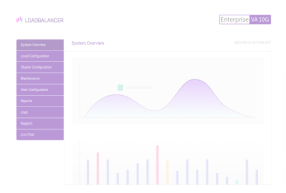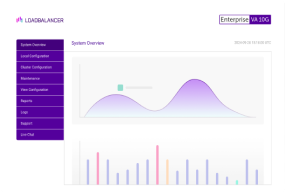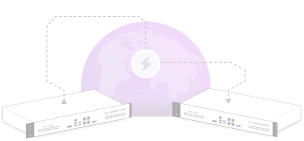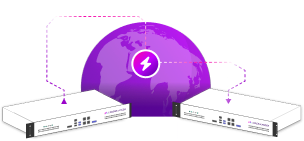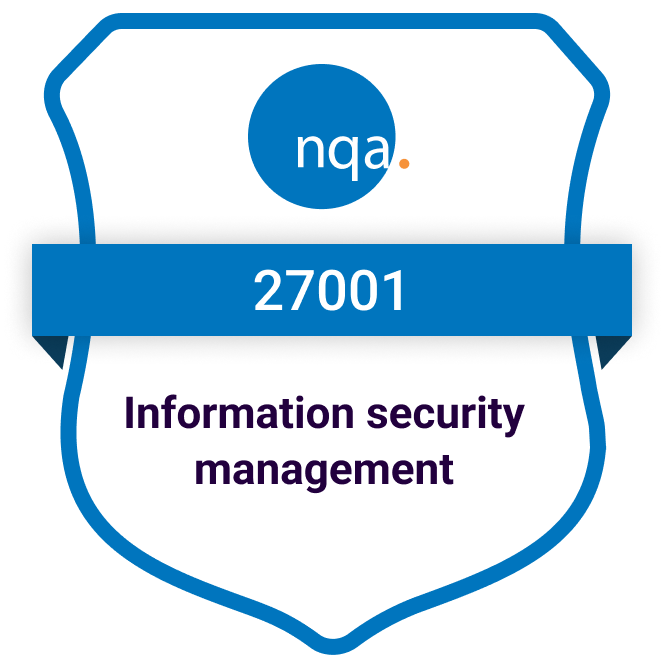Multi-site made easy for Engineers’ with smart GSLB
With multiple data centers, you know that you need the resilience and performance of GSLB. But, if you do it the wrong way Global Server Load Balancing can be an expensive mistake.
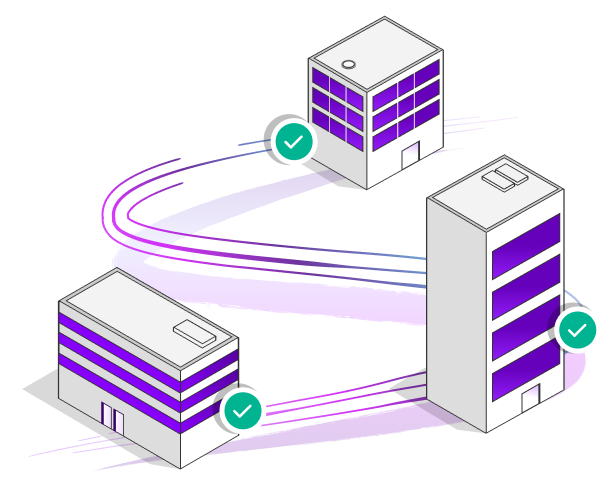
You’re probably doing GSLB wrong
Or to be slightly less aggressive, a lot of people think that GSLB is all about using the closest data center to your location so that you get low latency for remote workers.
Yes, that’s important and we definitely recommend you use something like Cloudflare for that, and while you’re at it make use of their excellent CDN features for static content.
But when it comes to true multi-site applications like AI & Object Storage. Then saving a few milliseconds of latency is not important. What’s important is getting 100X the performance for local applications and storage, by ensuring local traffic in the data center stays local. And saving 10X bandwidth costs on data center WAN connections for replication of data.
GSLB isn’t about geography. It’s about locality, health, and app awareness. So if your load balancer doesn’t know what your application is doing, it’s not smart load balancing — it’s just hoping.
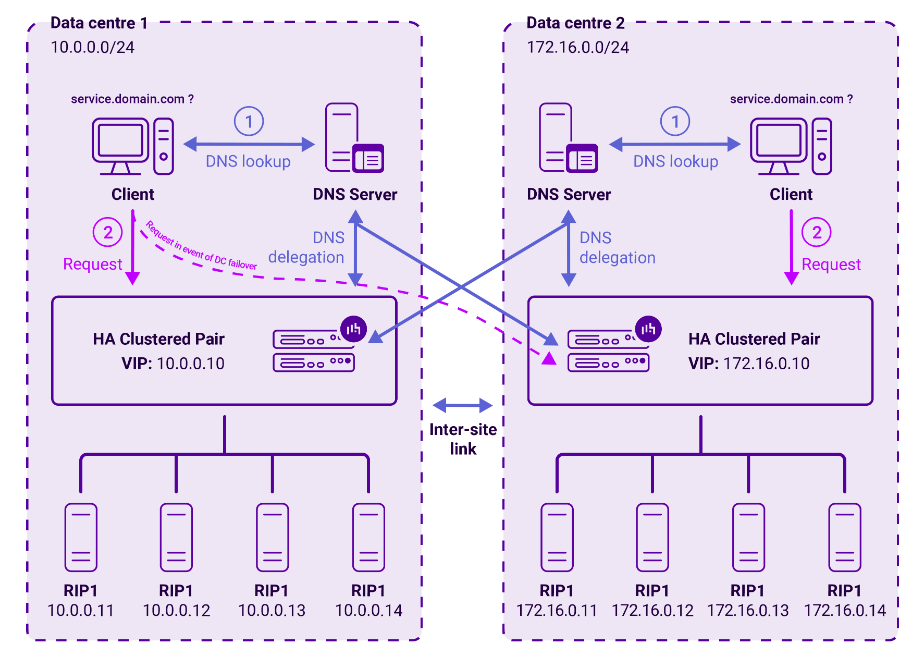
Geo latency vs locality-based performance
Cloudflare’s Geo-IP routing picks the nearest edge, reducing latency — but it doesn’t help with application performance. Smart GSLB understands your internal infrastructure, not just the user’s latency.
Public health vs Private performance
Geo-routing health checks are great. But they only see your public end points and whether they’re online or not. Smart GSLB, on the other hand, monitors and load balances based on real-time application performance.
Get the best of both worlds
Cloudflare’s global network is built for broad website content delivery — not high performance applications for AI and storage infrastructure. Luckily smart GSLB works seamlessly with Cloudflare so we recommend that you use both.
So how can you do GSLB right?
Smart GSLB uses real-time data to intelligently route traffic. Because it understands where your applications and users are, and how your infrastructure is configured using site-specific subnet topology.
This is crucial for critical applications using object storage, such as expensive AI infrastructure where bandwidth constraints costs a huge amount of wasted time and money. Or for critical healthcare systems, where data sovereignty and uptime are non-negotiable.
And when it all goes wrong our GSLB ensures quick multi-site failover, meaning no manual DNS updates and zero downtime for your critical applications.
By combining real-time health checks, application awareness, and true locality-based logic, smart GSLB intelligently routes every request to the right place on the first attempt, making sure it’s fast, secure, and compliant.
But the most important thing is not the technology — it’s the people who help you get it done right.

Multi-site GSLB for AI workloads greater than 1Tbps*
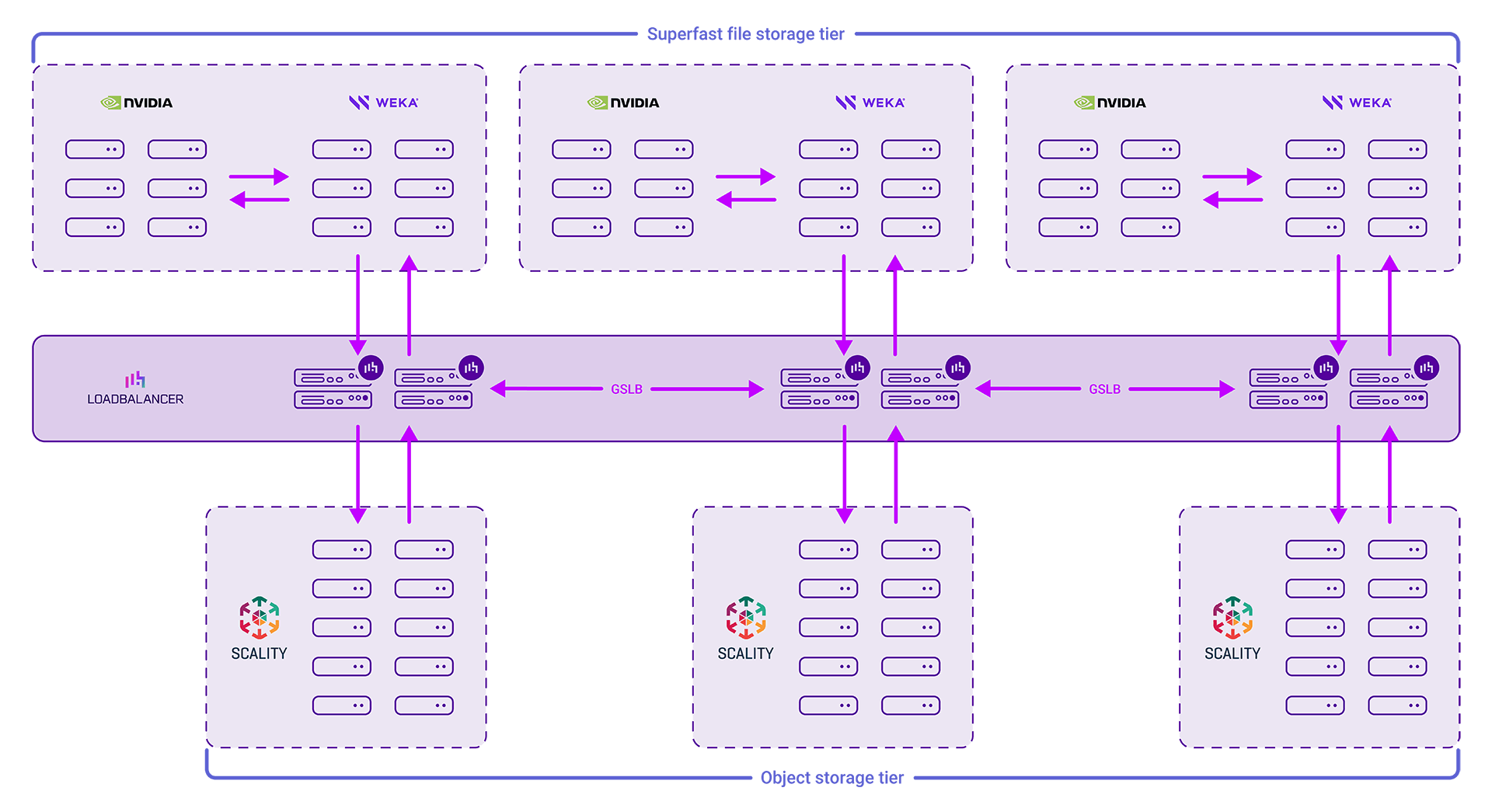
with 18 Load Balancers in 3 data centers, designed for >1 Tbps (~84 Million GB/Week) and 33,000 SSL TPS.
Make sure that you get all the benefits of GSLB
Zero Downtime
In the event of a regional outage, traffic is automatically rerouted to healthy sites — no manual intervention required.
Multi-Site Failover
Supports active-active and active-passive deployments, ensuring seamless failover between sites with minimal downtime and no disruption to users.
Reduced Costs
By keeping traffic local and routing intelligently, Locality GSLB avoids unnecessary cloud egress fees and inefficient routing across regions.
Faster Apps
More than just Geo-IP. Our DNS is aware of infrastructure health, application performance, and locality — making smarter decisions, instantly.
With a partner who understands complex infrastructure
Providing clever features, with performance benefits
The University of Leicester safeguards it’s assets with smart GSLB and load balancing
To protect research data and other intellectual assets of international importance, the University of Leicester has to keep its Cloudian data back-up system running at all times. The university uses solutions from Loadbalancer to help store and secure over 120 terabytes of data every week.
120
Terabytes per weekLet’s take a closer look at GSLB, together
Frequently Asked Questions
No, Loadbalancer.org includes GSLB functionality at no additional cost with all Enterprise appliances.*
Unlike other vendors, this integrated approach combines Layer 4, Layer 7, GSLB, and WAF capabilities in a single device. This eliminates the complexity and cost of managing multiple systems while providing cost-effective enterprise-grade global load balancing.
* Excluding VA Basic
GSLB significantly enhances disaster recovery by providing automatic failover between geographically distributed data centers. When a primary site experiences an outage, GSLB instantly redirects traffic to healthy backup locations without manual intervention. This multi-site resilience approach ensures 99.99% uptime by eliminating single points of failure. For business continuity, GSLB enables seamless user experiences during planned maintenance, unexpected outages, or regional disasters by maintaining application availability across multiple locations worldwide.
Global Server Load Balancing (GSLB) is an intelligent DNS-based traffic distribution system that routes users to the optimal data center or server location based on real-time health checks, geographic proximity, and performance metrics. Unlike basic DNS failover, GSLB continuously monitors server health across multiple sites and makes smart routing decisions to ensure maximum uptime and optimal user experience. GSLB works by intercepting DNS queries and responding with the IP address of the best-performing available server, considering factors like server load, network latency, and geographic location.
While DNS round-robin simply cycles through a list of IP addresses without considering server health or performance, GSLB provides intelligent, health-aware traffic distribution. GSLB performs continuous health checks, considers geographic proximity, monitors server load, and can implement sophisticated routing policies. If a server fails, DNS round-robin continues sending traffic to the failed server until TTL expires, whereas GSLB immediately removes unhealthy servers from rotation. GSLB also supports weighted distribution, geolocation-based routing, and can integrate with load balancers for comprehensive traffic management.
Yes, GSLB is highly effective for internal and private applications. Many enterprises use GSLB for internal storage applications, private cloud platforms, and corporate tools distributed across multiple office locations or data centers. GSLB provides the same intelligent routing benefits for internal traffic, ensuring employees always connect to the fastest, most available internal resources. This is particularly valuable for global organizations with distributed workforces accessing centralized applications, databases, or file storage systems.









